#dual dao
Text
The Problem With "Dao Swords": My love-hate relationship with pleonastic translations
An essay that no one asked for.
A lot of fanfics call Zuko’s broadswords “dao swords.” As a Chinese to English translator, this phrase makes me pause every time. Here is my humble opinion on “dao swords” and other pleonastic translations:
What the heck is a pleonastic translation?
I’m so glad you asked! “Pleonasm” is a fancy term for a redundant phrase, like “black darkness” or “burning fire.”
A pleonastic translation is a phrase that puts the source language and the translation back-to-back. A common example is “chai tea” which literally means “tea tea.”
“Dao swords” is a pleonastic translation. “Dao” 刀 is the Chinese blanket term for blade. The phrase basically means “sword swords.” Sounds pretty silly, right?
Pleonastic translations are bad?
I think it depends on your audience, the text purpose, and how special the word is.
In advertising, pleonastic translations can help increase a product’s searchability. Ex: “Longjing Dragonwell tea” would appear in a Google search for either “longjing” or “dragonwell.”
Tourist destinations often use pleonastic translations to help foreigners navigate. Ex: “Nanzhan South Station” on a map helps foreigners know what the place is, but also gives them the Chinese pronunciation so that they can communicate with their taxi driver.
In literature, a pleonastic translation is a succinct way to introduce a culturally significant term without a footnote or distracting tangent. A lot of translators will sneak in a pleonastic translation the first time the word appears in a text, and then use the untranslated term alone every time after. Ex: "He slouched on the kang bed-stove. His grandmother sighed and took a seat on the kang too.”
Is "dao" a culturally significant word?
No.
Dao is a super mundane word used to describe any kind of single-edged blade, from butter knives to ice skates. It feels weird to keep such a normal word untranslated. Using the Chinese word emphasizes its foreignness. They’re not just swords, they’re special, Chinese swords.
Yes, words take on different meanings as they pass from culture to culture. That’s how language works. But English is also a unique case. Because of imperialism. I think English speakers have an obligation to avoid exotifying every-day words.
Also, English is a global language. Chinese speakers are reading your translation, and…I dunno...“sword swords” feels off putting. Disruptive.
But I want to acknowledge the real-life culture behind the swords
Giving credit to the cultures that you're borrowing from is an A+ idea.
...I don't know how to do this in a fantasy setting.
Zuko’s swords and fighting style is based on oxtail sabers (牛尾刀)and Shaolin dual broadswords (少林双刀). @atlaculture has a very cool post on oxtail sabers. But calling his swords "oxtail sabers" doesn't work because cows don't exist in atla.
Shaolin is a type of martial arts that originates from Shaolin temple in Henan, China (Shaolin itself literally means “young forest”). But you can’t call them “Shaolin broadswords," since Shaolin does not exist in the Fire Nation.
It’s quite a pickle.
Maybe just use a footnote?
So what should I call Zuko’s swords?
I don’t know.
I think you can just call them broadswords. That’s what the TV show calls them.
Dao by itself could work too if you need to differentiate Zuko's dao from Sokka's jian (double-edged blade). Readers can probably figure out what dao means from context.
If it’s not clear from context what dao means? *sigh* ..."Dao swords" it is, I guess.
To end on a happier note, here is a video of Chang Zhizhao busting some sweet moves.
youtube
#atla#dao swords#shaolin#zuko#transaltion#dual broadswords#thank you for coming to my tedtalk#Youtube
1K notes
·
View notes
Text
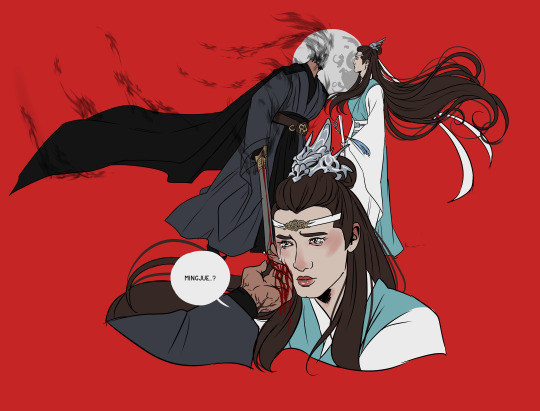

Alternate paths
#nielan#nie mignjue#lan xichen#my art#the untamed#mo dao zu shi#mdzs#last picture is inspired by word of honor's six harmonies dual cultivation#immortal lxc saving nmj from brink of death ;v;
1K notes
·
View notes
Note
I've been understanding a lot of cultural subtext around MDZS thanks to you. I'd like to ask more about what makes "cultivation partners." Is it synonymous to marriage or is it a different thing altogether? From my understanding of various marriages depicted in MDZS, marriage can easily be a power move, right. I've also read about dual cultivation, but not sufficiently, and I wish to understand if becoming cultivation partners, sex, marriage - all are supposed to be exclusive stuff. like Jin Guangsham was married yet had sexual relations with plenty of people, perhaps including cultivators? JFM and Madam Yu had a complicated marriage; were they cultivation partners as well? Mianmian married a non cultivator (?) but still went on night hunts to cultivate her core. Other marriages were Qin Su and JGY, and JZX and JYL - so, I do wonder if all of these were classified as cultivation partners.
Another thing I do wonder is, from where I am, in olden times in certain dynasties it was acceptable to have many wives or spouses or marry for gains. In others, the emperor had one true wife who would repeat 7 lifetimes with him and the others were on a lower social level - ploys for expansion etc. I wonder how monogamy etc plays out in chinese context around mdzs time frame, as well as what sort of "expectations" marriage should entail?
><
Woo… that’s a fair bit. Okay. I’m going to try to answer what I can. Let’s take this one thing at a time.
1. The O.G meaning of cultivation partner:
Cultivation partner = Daolǚ (道侣)
From a lingual view, dao is path, truth, knowledge, and faith. Lǚ is a companion who shares your food, your bed, and your path. So Daolǚ = one who walks the same path in pursuit of truth, faith, and knowledge as you.
From a Daoist view, Daolǚ is a couple who cultivate together, who seek the same truth together, and who share life and death together. They don’t necessarily have to be husband and wife or lovers. They can also be family members, parent and child, or shifu and dizi. They can be of different sexes or the same sex. All of those are only accessories to the OG meaning.
The core of Daolǚ is “ones who seek the same truth.”
This video is from a master Taoist answering the question, “Are Dao couples husbands and wives?”
http://baike.baidu.com/l/nBoL850d
2. So why did MDZS use Daolǚ when talking about married couples? AKA a stealth reference to a real-life historical split in opinions:
The first time the topic of Daolǚ comes up in the novel is during the Cloud Recess era when Lan Qiren taught the history of the Lan ancestor, how Lan An met his Daolǚ, and together they created House Lan. Then the students started discussing their future Daolǚ, which eventually led to the fight with Jin Zixuan.
Daolǚ, in this context, definitely sounds like a different word for a married couple in the setting. Why?
Well…. Because there is a historical split in opinions regarding what Daolǚ really is in practice.
Of course, if we are only talking in theory and lingual origin, then the married or sexual aspect just doesn’t come into play. But in real practice, this kind of close proximity inevitably ends up becoming (or is born out of) actual physical, emotional, and sexual intimacy.
Think about it. The one who shares your faith. The one who shares your path. The one who holds the same ideal. The one who shares your food, your life, your bed. The one whose life and death are intertwined with yours. The one who will walk with you to the very end, wherever it may be. The one whose soul is literally linked to yours through shared cultivation.
You don’t really get this kind of exclusive, super intense, intimate relationship from anywhere other than a married couple. Of course, there are exceptions, but they are, by and large, exceptions that prove the rule.
It’s very funny because even in the official Baidu entry for Daolǚ, beneath the super official definition provided by Daoism associations and sourced from some of the most credible historical texts that survive to this day, even they had to admit in the modern understanding, and especially in media portrayal, Daolǚ is used almost exclusively to refer to Daoist couples in every way that a regular couple can be. Even funnier, if you go and search for the term 道侣双修 (Daolǚ dual cultivate) in the book section, it turns up some 4300 titles concerning Daolǚ dual cultivation. And a very significant portion of those 4300 titles aren’t actually entertainment media at all, but actual historical texts, modern research, and serious treatises written by reputable modern Daoists on the subject.
Okay. So then, why not just admit that outright? Why the extra step? What’s there to disagree about?
Well, because sex is icky.
Hahahaha! But no really…
3. Dual Cultivation aka Magic Sex:
And here we are at the crux of the historical split of opinions.
Dual Cultivation aka Magic Sex (eyebrow waggle!).

From Daoism's founding point, the idea of harmony between Yin and Yang has been one of the founding precepts laid by Laozi himself. There’s not a single reputable Daoist school that disagrees with this precept. The disagreement comes from the interpretation of this precept instead.
From very early on, there were already schools that believed in the application of Yin Yang harmony to manifest as the physical and spiritual relation between men and women (or Yang bodies and Yin bodies).
How early are we talking? Well, BCE kind of early. The earliest text that teaches sex art as part of Daoism is a pre-Qin-dynasty book named The Dao of Huangchi 黃赤之道. This text was later religiousized by various schools of Daoism.
Before the 10th century, there was not much disagreement at all among ancient Daoists about the sex part.
Sexually explicit dual cultivation only became an issue sometime around the Tang dynasty forward (618 - 906 CE). Why the Tang dynasty? Well, that’s around the time Daoism became bourgeois. Before Tang, Daoism was the religion of anti-authoritarian hippies (for lack of a better word). Yep, they were very screw-the-government, let-me-have-my-weed-and-intense-sexercise-while-high kind of people (I’m not even kidding).
One of the earlier records of Daolǚ dual cultivation after the bourgeois-ification of Daoism that still survives to this day is Wu Zhen Pian by Zhang Boduan from the 10th century. Around this same era, numerous sects and schools adopting the same practice of Daolǚ dual cultivation (sexually explicit at that) sprouted up, such as: Shuangxiu Sect, Fangzhong School, etc…
The Wu Zhen Pian, despite being a fairly cryptid text, also explicitly referred to the “places where the body is first given qi” as the male and female genitalia. So there really isn’t any room for misinterpretation as to what exactly it was speaking of.
Around this same era, the disagreement around dual cultivation being sexually explicit and Daolǚ being 99.99% couples became very intense… as in sect war kind of intense.
Ancient High Chinese society was, by and large, very “performatively” puritanical. So from the time Daoism started rubbing shoulders with kings and rulers (instead of eschewing them as the literal founders of Daoism taught), they also started eschewing their fairly sexual, anarchist roots.
Ergo… the ideological schism.
This schism would split between diehard, purists practicing Daoists from the more neutral ones that used Daoism as a political tool as well.
4. A history of sexual exploitation:
Okay, so sexy Daoism is the pure, root Daoism. Why isn’t it the one being preached as official these days?
Because… as usual, whenever there’s a great idea, some chuckleheads somewhere would come along, bend it around its knees, and abuse it instead.
Think about it for a moment. Daoist sects in ancient times were steeped in mysticism. Many of them were powerful and rich. You throw in the sex element. It’s extremely easy for exploitation to happen.
Cults are some of the oldest things in the history of mankind. Sex cults aren’t new, and they aren’t rare, either. Charles Mansion of the Mansion family is just one in a very, very long string of such things.
Let’s just say that for many reasons and many factors, pure Daoist schools practicing sexually explicit dual cultivation also tended to have a checkered history and that along with the historical transformation of Daoism from an anarchist religion to a state-sponsored philosophy massively discredited them.
To this day, you can still trace this history of exploitation down to modern media concepts such as “Human Cauldron,” which is the term denoting a human being used as a sex slave and a cultivation tool by another cultivator. You would think that’s a modern media invention… but no… this term has a long and dark history. Forgive me but I don’t exactly want to go into details in this part.
5. So, what does this all have to do with MDZS?
Well, you can use this context to understand how concepts like dual cultivation and Daolǚ are interpreted and practiced by different people within the MDZS world. MDZS is based in Wei Jin period, which was a period of transition, chaos, and clashing ideologies. You can kinda see that complexity in the way a concept like Daolǚ seems so… mixed and different between theory and practice.
When you really get down to it, there are two ways to understand Daolǚ. 1/ Those who share the same mind, the same faith, the same truth. And 2/ Those who are boinking magically.
Do Wangxian meet these requirements? Yep, both of them. I think that’s pretty clear. Near the end of the story, when Wei Wuxian said his goodbye to Wen Ning and Lan Sizhui, he also remarked about everyone having their own “road” to walk and that, in the end, only one person walked the same “road” as him. That person, Lan Zhan, was also the one person he wanted to walk with. (I don’t have to provide a snap for this, right? People aren’t going to shoot out of nowhere and accuse me of not providing adequate citations, right?). Dao is road. So that’s another nod to the fact that Wangxian are Daolǚ in every interpretation of the concepts (And yes, I’m totally into the interpretation that their boinking is, in fact, magical and working to stabilize Wei Wuxian’s cultivation! Look at the Japanese art featuring Wei Wuxian with the blue cloud patterns on his body! Clearly, lots of people agree with this interpretation! You can’t convince me otherwise!).
What about Jiang Yanli and Jin Zixuan? Are they Daolǚ? Ehh… it’s kind of a toss-up, isn’t it? There’s not really much in any permutations of MDZS (with maybe the exception of the live-action) that either supports or disprove. I think if you want to interpret them as Daolǚ and Jin Zixuan would eventually help Jiang Yanli cultivate a Jindan and be able to stay young alongside him, you definitely can do that. Or if you want to see them as a more traditional, ordinary husband and wife couple, then that’s a valid interpretation too.
Jin Furen and Jin Guangshan? Ehhh… the above paragraph applies… although… geee… I really don’t see them as either pursuing the same truth or… exclusively boinking magically or that either is using the other as a human cauldron… although that doesn’t disqualify Jin Guangshan himself from using that for his sexual escapade? But then why would he die to marathon sex? I guess Jin Guangyao is hax enough?
In any case, I’m going to stop here. I’ve been sick for the past three weeks and my work has been really demanding. I really tried hard to reserve some free time to write. So the things I have not answered, can you come back to me another time and I will, when I find the time and full citation materials, write a separate reply?
Have a great day!
Oh, also… just as a disclaimer, please don’t use my writing for fandom strife or anything like that. I only very recently found out there were people using my writing for… well… Let’s just say I’m not for that. If anything, please use my writing for creative purposes or just to learn something new!
267 notes
·
View notes
Text



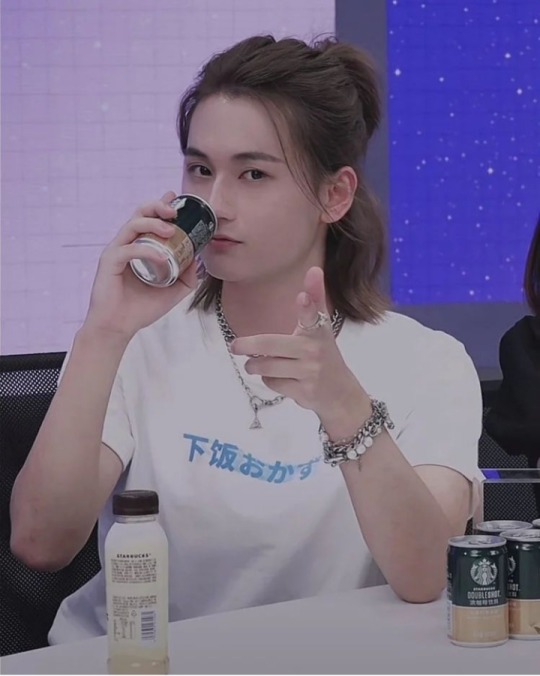
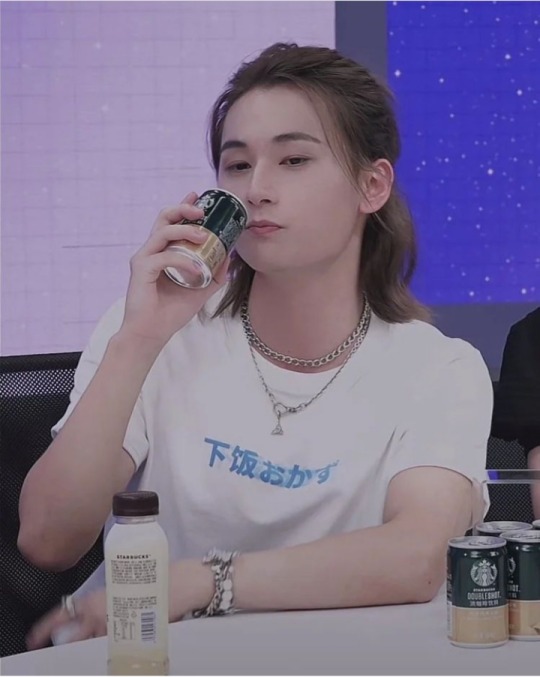
Ji Li is being great as Modern!Nie Huaisang...
Man, I have a problem with the Nie Bros, but Ji Li doesn't help with the long hair (and neither Wang Yizhou with that smile... I'll scream because Smiling Da-ge for the rest of my life).
502 notes
·
View notes
Text
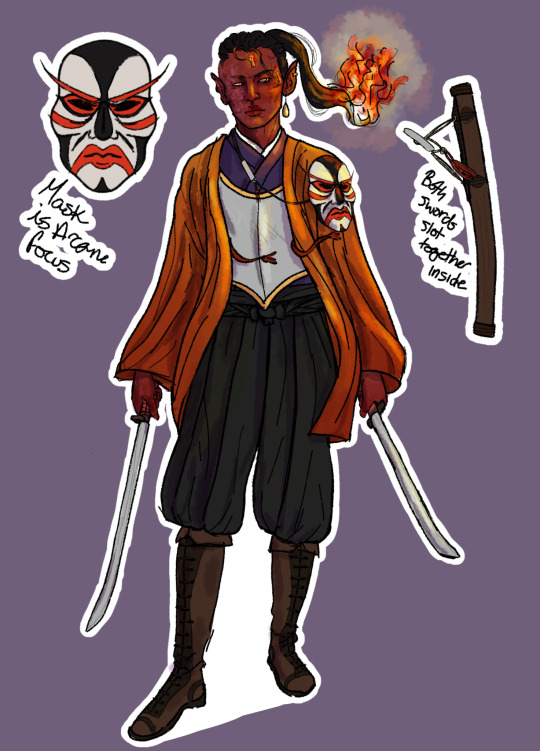
I drew up the design for a quite old D&D character of mine, which is a shameless recreation of Prince Zuko but a Fire Genasi Hexblade Warlock. One day I'll play him in a game!
#D&D#dnd#dungeons and dragons#fire genasi#warlock#dnd warlock#dnd art#d&d art#dnd character#prince zuko#bc why not lmao#my art#digital art#artists on tumblr#my ocs#Akio#i forgot his last name#also yes yes i know i went for Japanese inspo on his clothes but the Dao are chinese and Zukos mask was based on the chinese Nuo opera masks#but atla was also very prone to mixing its inspirations for the fire nation and i wanted a more Japanese styling for Akio but didn't want to#depart from the dual dao and the theatre mask of Zukos blue spirit
16 notes
·
View notes
Photo

Training Under the Plum Blossoms
Mengben dancing with steel as the morning sun shines upon the wintery landscape
Posted using PostyBirb
#mengben#wuxia#warrior#wanderer#youxia#xiake#xia#conical hat#douli#dual wielder#dual wielding#armor#shuhe#bijia#huwan#hanfu#wrist guard#shuang dao#niuweidao#sabers#tiger#amulet#plum#blossom#grove#winter#snow#ice
7 notes
·
View notes
Text
we as a society need to remember that no one, no one, is more cringe fail loser than zuko
#king of breaking and entering#master of fire bending and the dual dao#still gets his ass handed to him by every member of the gaang and most of his family#he talks to animals and has no social skills hes my fav#this is mostly directed to ppl on tiktok but i dont post on there bc it scares me
4 notes
·
View notes
Text
[yesss bl.ue spi.rit zu.ko is so cool]
2 notes
·
View notes
Text
Heart Deviation - Chapter 4
Summary: Lan Wangji is sick and the only one who can save him is Wei Wuxian. The problem? Lan Wangji doesn’t want to take his medicine. How can Wei Wuxian convince him that fucking him is better than dying?
Fortunately, Lan Xichen is there to help. (And boy does he help)
Words: 4.1k for Chapter 4, 15.3k in total
Fandoms: 魔道祖师 - 墨香铜臭 | Módào Zǔshī - Mòxiāng Tóngxiù, 陈情令 | The Untamed (TV)
Rating: Explicit
Relationships: Lán Zhàn | Lán Wàngjī/Wèi Yīng | Wèi Wúxiàn, Lán Huàn | Lán Xīchén/Wèi Yīng | Wèi Wúxiàn
Tags: Angst, Dual Cultivation, Fuck Or Die, Hurt/Comfort, Pining, Getting Together, Alternate Universe - Canon Divergence, Aged-Up Character(s), First Time, Love Confessions, Kissing, Masturbation, Light Dom/sub, Sexual exploration, Happy Ending, Cloud Recesses Study Arc (Módào Zǔshī), Lan Wangji's canonically large cock and unhinged horniness take over his brain
Dynamic: Top Lán Zhàn | Lán Wàngjī/Bottom Wèi Yīng | Wèi Wúxiàn
#mdzs#lan wangji#lan xichen#wei wuxian#wangxian#xixian#the untamed#mo dao zu shi#mdzs fandom#mdzs fanfiction#lan xichen x wei wuxian#top lan wangji#bottom wei wuxian#dual cultivation#mdzs fanfic#mdzs fic#my fic#smut#mdzs fanfic rec
6 notes
·
View notes
Text
Okay actually friendship ended with playing a mage inquisitor. Archer is my new favorite class
#I LOVE playing mage but I like the archer so fucking much... Teehee#I will never NOT play mage hawke tho. Rip Bethany I love Carver and fenris romance angst too much#Unusually choose based on character though. I've never played a two-handed warrior though#I've played dual wield archer mage sword and shield and the dual wield warrior option from dao#Always make my brosca and cadash dual wield rogues but god do I hate playing as a dual wield rogue. Anything for the dwarf tho 🙏🙏
5 notes
·
View notes
Text
Sex, Science, and True Love: A Rigid Analysis of the Practical Applications of Dual
“I once heard a rumour that this is how Lan An and his cultivation partner did it,” Ma Qiao piped up. “Which, I mean, if anyone could…”
“The Lans are far too boring and repressed for something like this,” Wei Wuxian said, with the authority of one who had been resoundingly ignored by a Lan for the past month. “Can you imagine Lan Wangji dual cultivating?”
Everyone knows that dual cultivation is a myth that only works in porn. Wei Wuxian discovers differently.
#mo dao zu shi#the untamed#lan zhan#lan wangji#wei wuxian#wei ying#lan zhan/wei wuxian#everybody lives#dual cultivation#fanfic recs
1 note
·
View note
Text
Sokka: I fondly look back at the time I took Zuko with me to the Southern Water Tribe because of how awkward he was the whole time
Sokka: One of the aunties was handing out ice cream to the kids and I had to physically drag Zuko over to get one because he was too nervous to actually walk over there by himself to ask for one
Sokka: Man would take on a whole militia of armed psychopaths with only a set of dual dao, ALONE, but he won’t go ask a tiny auntie for an ice cream
Sokka: Gran-Gran told me I better marry that man or she’ll be disappointed in me
#incorrect quotes#incorrect avatar the last airbender quotes#avatar the last airbender#a;tla#sokka#zuko#zukka
783 notes
·
View notes
Text
Thinking abt Zuko and his dual dao swords and how because of that what if he was ambidextrous
And he tells the gaang this and Aang is like that’s great Zuko love who u love! and Zuko’s like 😑
714 notes
·
View notes
Text
Just imagine if Zuko taught Katara how to wield dual dao swords.
142 notes
·
View notes
Photo
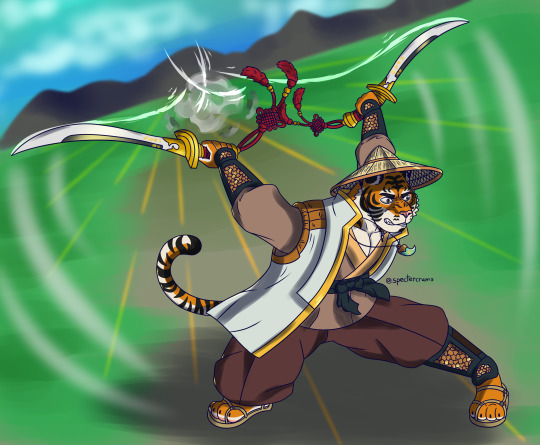
Mengben's Fury
In the heat of battle, Mengben's more cheerful demeanor gives way to a somewhat controlled fury that will not hesitate to absolutely shred you into pieces.
Posted using PostyBirb
#mengben#wuxia#warrior#wanderer#youxia#xiake#daxia#xia#conical hat#dual wielder#dual wielding#armor#tiger#amulet#shuang dao#hanfu
3 notes
·
View notes
Text
so back in 2021 i wanted to do a rewrite of avatar: the last airbender but with avatar zuko- i actually wrote a lot of world building and was planning to like rewrite episode by episode but gave up on it before then, so- I'm just going to post it here-
Prior To Story.
Canon Story
Kyoshi died in the year 82 BG at the age of 230.
Roku was born in the year 82 BG and died in the year 12 BG.
Azulon was born in the year 0 AG and died 95 BG.
Monk Gyatso was born at 78 BG and died at 0 AG.
Aang was born at 12 BG and woke up 100 AG.
Canon Divergence
Kyoshi died in the year 52 BG at the age of 260.
Roku was born in the year 82 BG and died 0 AG.
Zuko was born in the year 52 BG.
Monk Gyatso was born 22 BG (in the South Pole).
Aang was born at 88 AG (in the South Pole).
Sozin had wished to wait until Kyoshi had passed for his plans for war, knowing her lack of hesitancy for ridding the world of Chin the Conqueror. News of Kiyoshi’s demise was delayed to the Fire Nation, thus it was assumed she died eighteen weeks before Prince Zuko, First Born to Sozin was born. When news reached Sozin, he began his re-education for the people of the nation. Installing propaganda into the Culture of the Fire Nation, making them believe that:
The Danger is Grave and Growing.
War will be easy and cheap, (but only if they act now.)
War will solve all (or at least most) of their problems.
The enemy is evil. Or crazy. Maybe both.
Peace is unpatriotic.
Sozin and Roku grew as close as brothers could. Each had attended each other's weddings as best men, and when there when their children were born. When Zuko had been born, with no spark to speak of, Roku convinces Sozin that it could very much be delayed, which is true, but very much of an understatement. Throughout Zuko’s life, Sozin is not present. Roku takes on the role of a father to the young boy, educating him in the way of the old Fire Nation, him disproving of Sozin's leadership, yet being none the wiser to what his dearest friend really wants.
On the day of Zuko’s birth, a dragon from the “abandoned” Sun Warriors Temple had flown down in the Courtyard. It was rare to see the said dragon and Zuko separated. Druk had been waiting for his companion for twenty years, to the point where he was a young adult at ten feet tall. Roku takes Zuko around the world to see the lies that Sozin is spreading are far from the truth, it is also where the Roku at the Southern Air Temple, when Zuko is ten, he learns of Zuko’s status of the Avatar as the Monk of the Temple shows him of the toys that prove of his Spirit.
Zuko began training at age four, even when his katas were cold. When Zuko is eight, he takes on the art of the sword, as he is ambidextrous, he learns to master the Dual Duo.
Zuko grows up under the teachings of Roku, learning that what Sozin is doing is wrong, but as he grows up and accompanies Sozin to his War Meetings. He holds his tongue until he learns of Sozin's plan for the Great Comet and the Genocide of the Air Nomads, it frightens him to his very core the fact that late into the night he calls for several messenger hawks to warn the four temples of the Air Nomads to run and hide. Many heed his warning and take refuge (along with Air Bison and Winged Lemures) in towns of the Earth Kingdom and the Water Tribes as well as the Swamp. However, not all do and stay to protect the temples. When reports come that many of the Residents of the Air Temples have escaped, Sozin learns of Zuko’s betrayal and soon goes to kill his own son. Sozin burns the left side of Zuko’s body, his burn travelling from his eye to his ear, down his neck, ending on the back of his hand.
Roku interferes, distracting Sozin enough to bring Zuko to Druk, with supplies that include his Dual Dao, and ends up sacrificing himself to save them, sending Druk to fly to the South Pole.
On the way there, Zuko wakes up, still very much injured during a storm, causing Avatar State to freeze both Druk and him in an iceberg.
Before Avatar Zuko
Canon Divergence
With Zuko’s warning, while many Air Nomads, the monks at the Northern and Southern as well as the nuns at the Eastern and Western, stayed. There were many that had escaped and years into the hundred year war, Airbenders could be found all across the world, Swamp, South Pole, Si Wong Desert, Ba Sing Se, etc.
Due to the help of the Airbenders, abandoning their pacifist morales, simply for the fact that the Fire Nation would not offer the same mercy, while preferring to offer non-violence at first, then resorting to defending themselves at the expense of the lives of the Fire Nation. The South Pole is not as decimated as it had been in the canon story.
There are several villages and far more waterbenders in canon. Some tribes consist exclusively of airbenders, some of those of watertribe members and others of both airbenders and watertribe. While the South Pole is nowhere near the structure of the North Pole.
Waterbenders have learned to hide their waterbending, meaning that the Fire Nation raids have become few and far between. With raids becoming scarce, Kya lives. Aang, Sokka and Katara grow up together, being thick as thieves. Aang most definitely is still a master airbender, and while Katara is so much better than she was in the beginning, there are most definitely gaps in her knowledge. Bato and Hakoda still very much leave for war, and Gyatso stays behind with Gran-Gran and Kya.
Sokka, Katara and Aang are on a fishing trip when they find something in an iceberg…
#atla#avatar the last airbender#atla zuko#zuko#atla druk#druk#atla roku#roku#atla sozin#sozin#atla gyatso#gyatso#atla aang#aang#atla sokka#sokka#atla katara#katara#strawberry speaks
37 notes
·
View notes